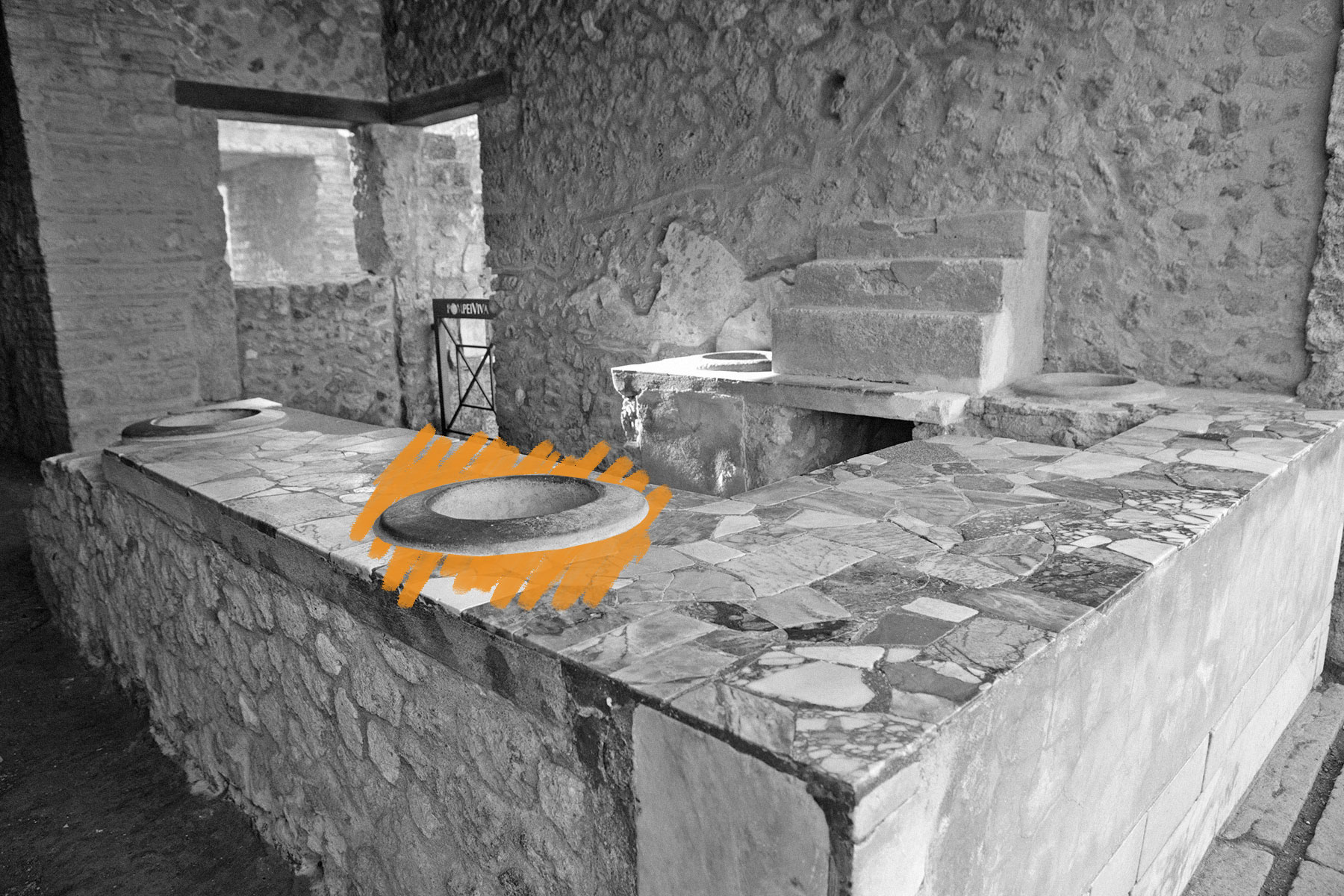The Romans had a version of fast-food restaurants.
Recent excavations of the ancient Roman city of Pompeii reveal that some aspects of society haven’t changed much during the last 2,000 years, including our eating habits. The Romans also had what were essentially fast-food restaurants. Known as thermopolia (or singularly as a thermopolium), these establishments sold a variety of ready-to-eat hot food. They were essential to daily life in ancient Rome, because not all citizens had kitchens. In the region around Pompeii, only around 40% of low-income households and 66% of middle-class households had a kitchen at home. Those who didn’t typically lived in insulae (apartment buildings) and relied on thermopolia for many of their meals.
Thermopolia were low-cost food joints, offering a selection of meats (such as chicken, pork, duck, goat, and snails), cheeses, fish, bread, and legumes, washed down with calida (a type of mulled wine) — there were no burgers or fries here. The food was held in dolia (large terracotta pots) on buffet-style counters. The more upscale restaurants had frescoes adorning the walls, depicting food that was eaten there (such as ducks or chickens) or deities (such as Mercury, the god of commerce, and Bacchus, the god of wine). Thermopolia weren’t without controversy, however. Roman Emperor Claudius once tried to have them shut down because of their poor reputation. Criminals, thieves, and other dishonorable members of society often gathered and drank wine at thermopolia, earning the establishments a bad rap.















